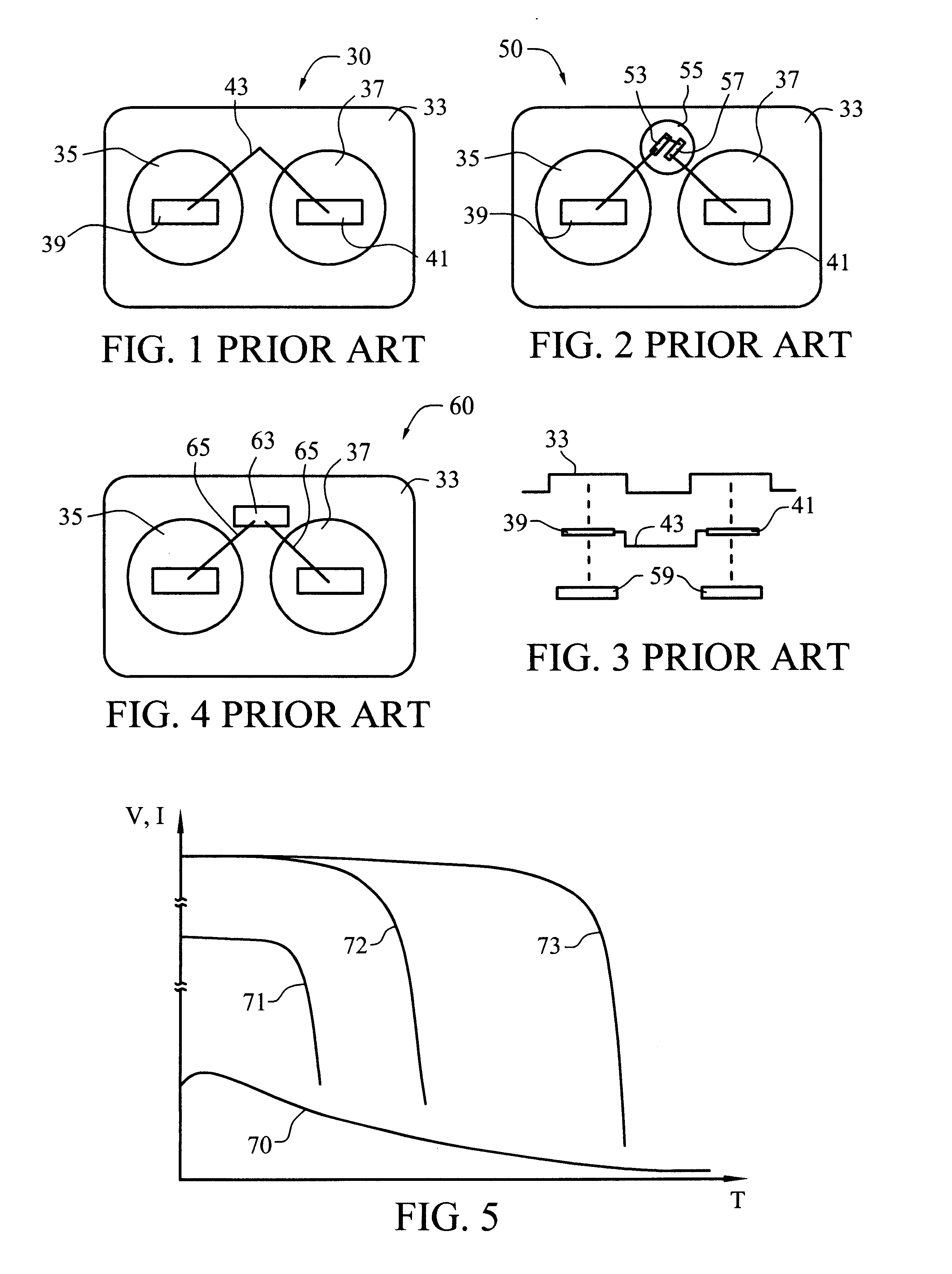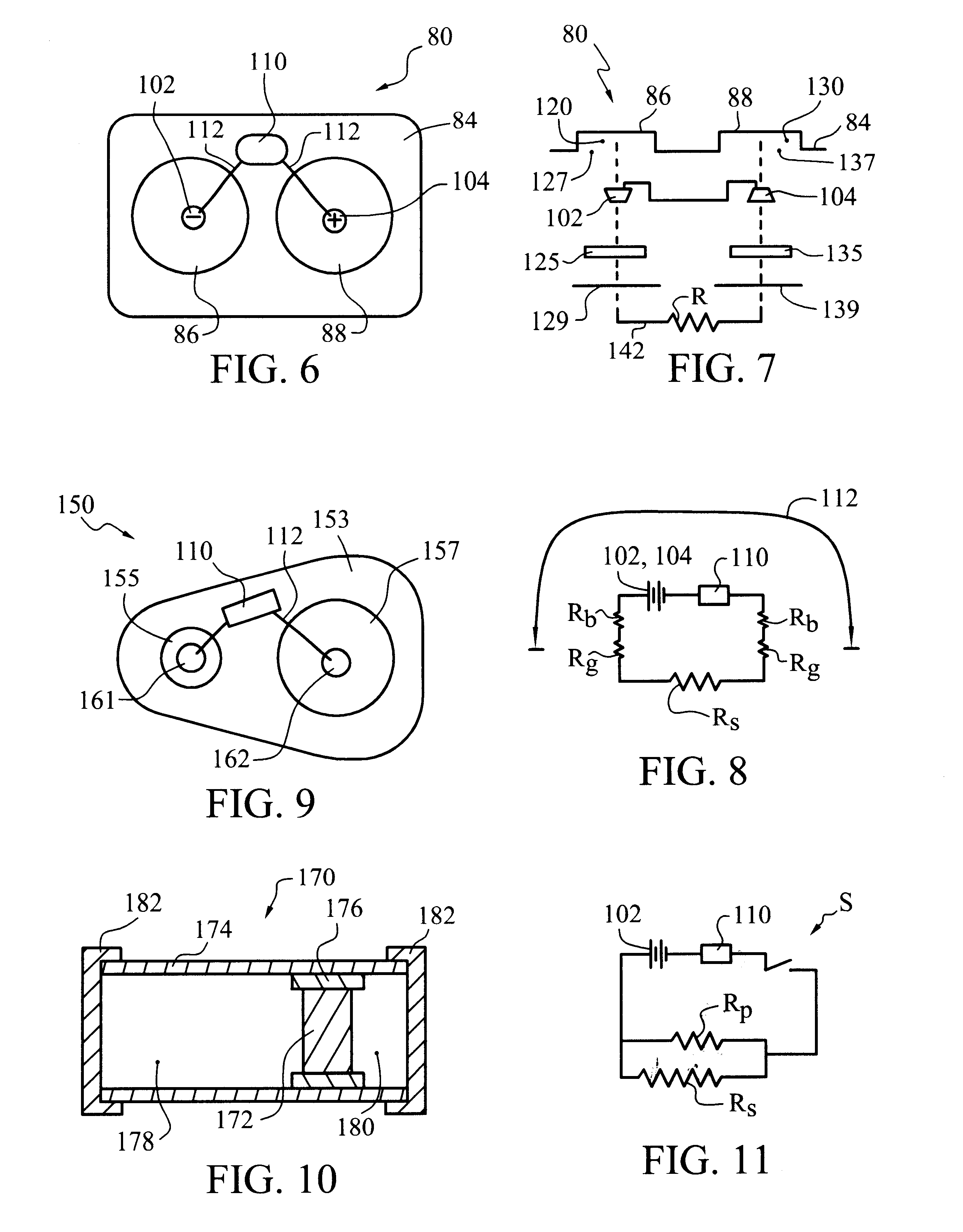Iontophoretic fluid delivery device
a technology of electrotransport device and ionophoretic fluid, which is applied in the direction of medical devices, other medical devices, therapy, etc., can solve the problems of compromising treatment, high cost of power module, and inherently long treatment time intervals, and achieves fast and accurate results
- Summary
- Abstract
- Description
- Claims
- Application Information
AI Technical Summary
Benefits of technology
Problems solved by technology
Method used
Image
Examples
Embodiment Construction
[0038]Reference will now be made to the drawings in which the various elements of the invention will be given numerical designations and in which the invention will be discussed so as to enable one skilled in the art to make and use the invention. It is to be understood that the following description is only exemplary of the principles of the present invention and should not be viewed as narrowing the claims which follow.
[0039]A plot of current discharge or voltage verses time is presented in FIG. 5, with the horizontal axis indicating a time scale and the vertical axis showing either a current flow or available voltage. Trace line 70 is representative of a current profile obtainable in a commercially available and disposable galvanic cell device, such as device 30. Trace line 70 shows a reduced current flow over time due to polarization of electrolyte in the areas surrounding the electrodes and a corresponding reduced rate of chemical reaction. Trace lines 71-73 are achievable in m...
PUM
 Login to View More
Login to View More Abstract
Description
Claims
Application Information
 Login to View More
Login to View More - R&D
- Intellectual Property
- Life Sciences
- Materials
- Tech Scout
- Unparalleled Data Quality
- Higher Quality Content
- 60% Fewer Hallucinations
Browse by: Latest US Patents, China's latest patents, Technical Efficacy Thesaurus, Application Domain, Technology Topic, Popular Technical Reports.
© 2025 PatSnap. All rights reserved.Legal|Privacy policy|Modern Slavery Act Transparency Statement|Sitemap|About US| Contact US: help@patsnap.com



